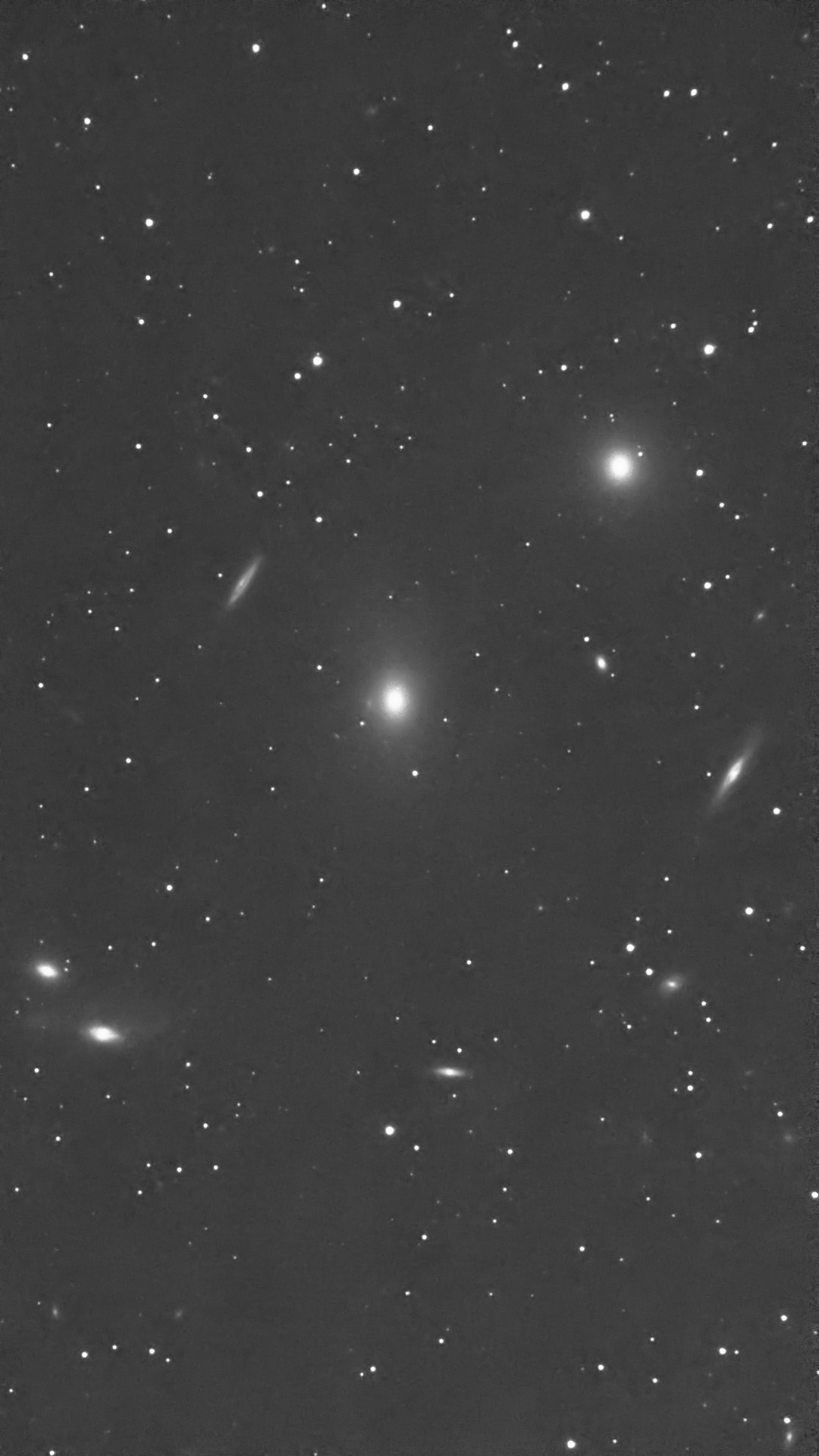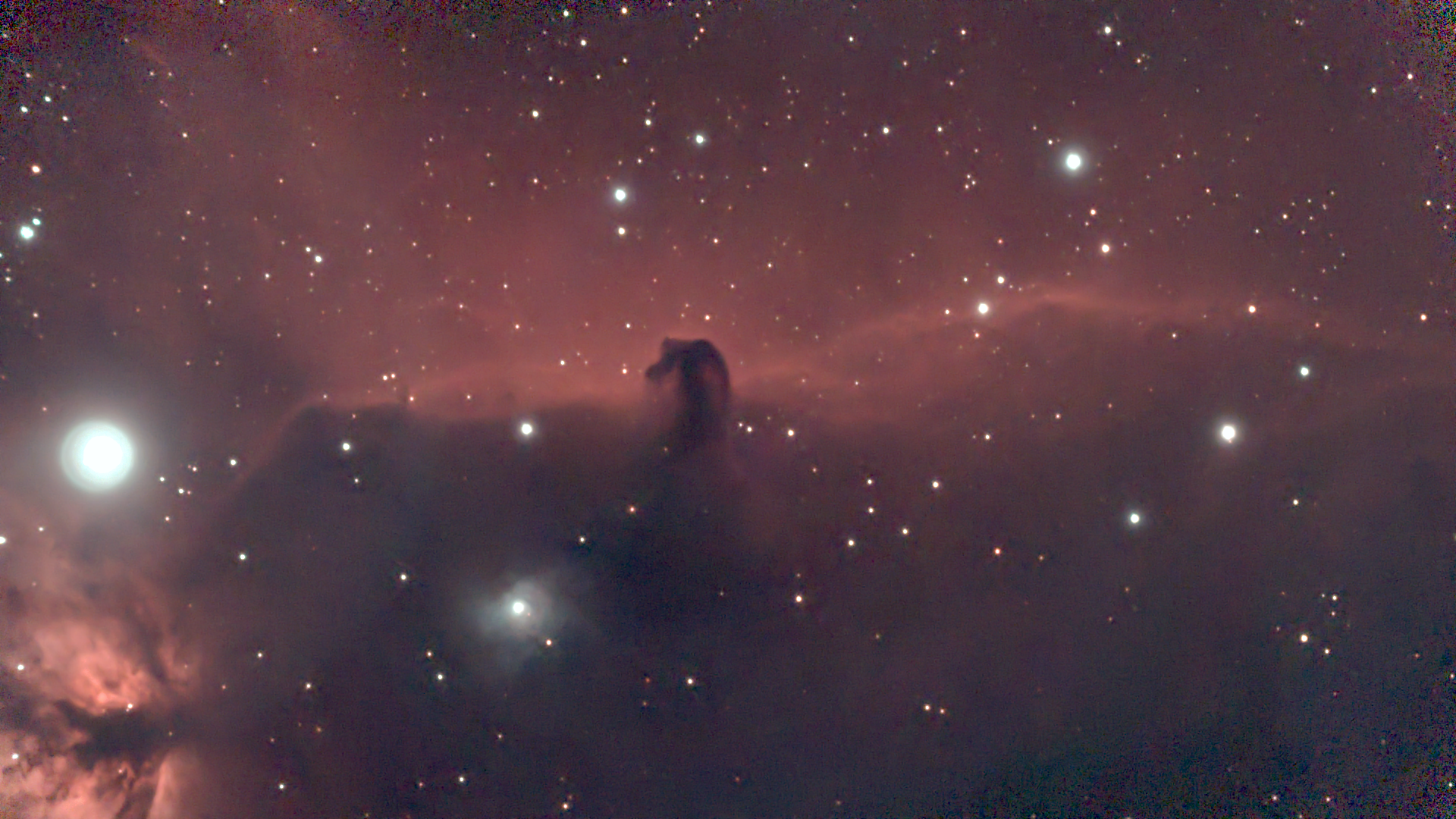𝐀𝐧𝐧𝐢𝐦𝐞 𝐖𝐨𝐧𝐠 on Nostr: I haven't felt too great over the last couple of days, and I had hopped to process ...
I haven't felt too great over the last couple of days, and I had hopped to process this image more. Oh well...
This is a snapshot of the Virgo Supercluster, nearly every fuzzy patch you see is a galaxy, and this is only a small part of it. The entire complex is enormous. Of note is that most of these galaxies are either of the elliptical or starburst variety, suggestive of the very complex interactions between the several thousand galaxy in the region. Very few pretty grand design spirals like the Milky Way.
This part of the cluster is called the Markarian's Chain... I don't really know why. Individually, many of these galaxies are famous in there own right.
The brightest one in the center is called Messier 86, discovered by Charles Messier, and many others in this image were discovered by William Herschel. Both these names are incredibly important in astronomy, and pop up as frequently as Barnard, if not more so.
Charles Messier was a comet hunter. Unfortunately for him, many deep space objects (objects outside the solar system, like star clusters, galaxies, and nebula) look just like comets through a telescope (our night vision is trash, and so everything looks like pale blue fuzzies... like a comet).
To help himself and others, he created a list of objects that were not comets. His list of a over a hundred objects is basically the field guide for beginner astronomers, fun things to look for in a small personal telescope.
William Herschel was a German composer who immigrated to Europe, also a comet hunter, and of his many achievements, is famous for being the first person to discover another planet, which he named Georgium Sidus. Unfortunately today, it has a more silly name.
There use to be a youtube video of one of William Herschel's songs, over witch someone put a bunch of holocaust denial stuff. I don't know why.

This is a snapshot of the Virgo Supercluster, nearly every fuzzy patch you see is a galaxy, and this is only a small part of it. The entire complex is enormous. Of note is that most of these galaxies are either of the elliptical or starburst variety, suggestive of the very complex interactions between the several thousand galaxy in the region. Very few pretty grand design spirals like the Milky Way.
This part of the cluster is called the Markarian's Chain... I don't really know why. Individually, many of these galaxies are famous in there own right.
The brightest one in the center is called Messier 86, discovered by Charles Messier, and many others in this image were discovered by William Herschel. Both these names are incredibly important in astronomy, and pop up as frequently as Barnard, if not more so.
Charles Messier was a comet hunter. Unfortunately for him, many deep space objects (objects outside the solar system, like star clusters, galaxies, and nebula) look just like comets through a telescope (our night vision is trash, and so everything looks like pale blue fuzzies... like a comet).
To help himself and others, he created a list of objects that were not comets. His list of a over a hundred objects is basically the field guide for beginner astronomers, fun things to look for in a small personal telescope.
William Herschel was a German composer who immigrated to Europe, also a comet hunter, and of his many achievements, is famous for being the first person to discover another planet, which he named Georgium Sidus. Unfortunately today, it has a more silly name.
There use to be a youtube video of one of William Herschel's songs, over witch someone put a bunch of holocaust denial stuff. I don't know why.
quoting note18vs…cx5fBarnard 33- The Vaush Nebula.
Continuing with objects discovered by the famous Southern astronomer...
Situated on the leftmost star of Orion's belt lies one of the well-known nebulae in the Orion molecular cloud complex. Notable for a distinctive dark cloud resembling a horse's head... it appears quite dramatically in photographs, when compared with the challenge of spotting it through even the largest telescopes. Unfortunately, unless you happen to have special eyes that can see in the near Infrared, it's impossible for us to B33. Meanwhile, the nearby Flame Nebula (lower left) is visible to the human eye as a faint hamburger-like patch... really a missed opportunity to not name it the Hamburger Nebula.
The designation "Barnard 33" originates from a catalog of "dark objects" discovered by E.E. Barnard. These are not holes or "patches of nothing", but incredibly dense clouds obstructing light. Being black on black, their discovery relied on long-exposure photography, a technique pioneered by Barnard himself, driven by the motivation to unveil these Dark Nebulae.
note1lk2…n05x


